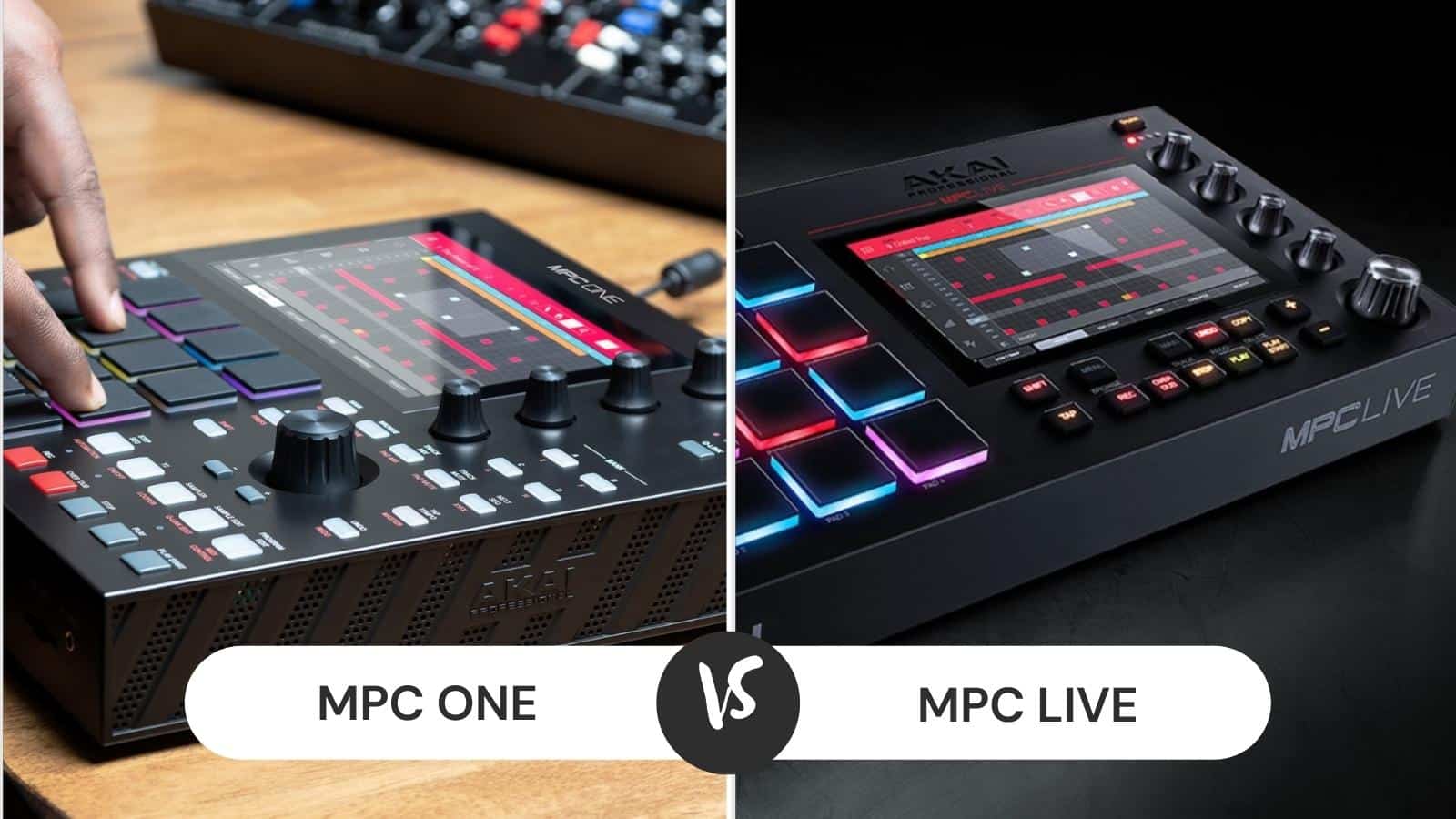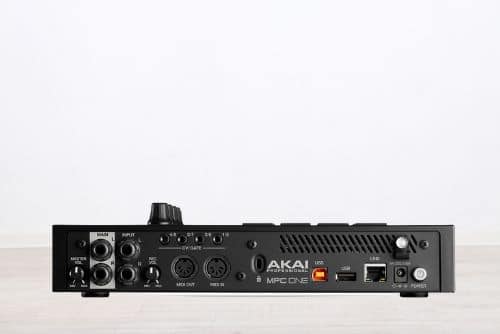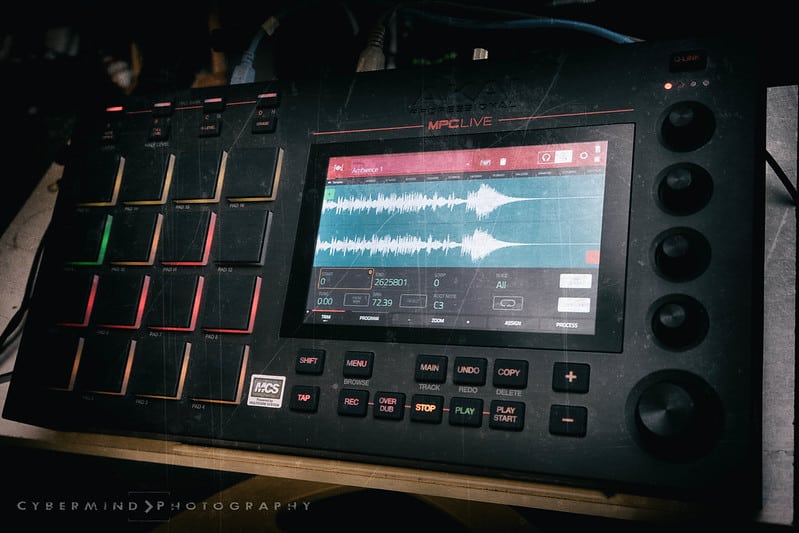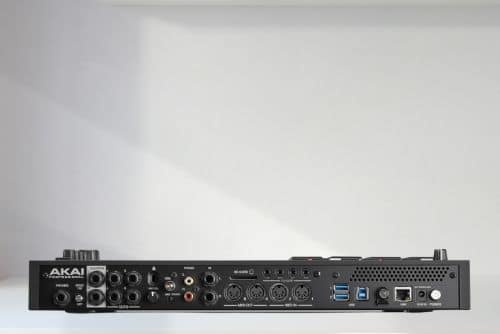
Creating music is an extensive process since musicians have to edit and mix up the songs. It can be challenging to manage these different steps on multiple devices, which is why a music production unit is suggested.
MPC One and MPC Live are two amazing units designed by Akai that help musicians pick the right loops and effects. However, to choose one unit, it’s important to know their features.
Comparing MPC One vs MPC Live
| Features | MPC One | MPC Live |
|---|---|---|
| Storage | 4GB but extendable | 16GB but extendable |
| Pads | 16 velocity-sensitive pads with RGB configuration | 16 pressure-sensitive pads |
| Inputs | 6 | 11 |
| Outputs | 8 | 9 |
| Sequencer | Eight-track audio and 128-track MIDI | Sequencer grid with manual input |
MPC One
It is a standalone music production unit designed by Akai and offers all the features in one device and eliminates the need for a computer.
It’s a perfect choice for independent musicians who want to create their own music samples by editing and mixing.
This is a compact unit with various advanced features; for instance, you can connect a MIDI interface or external audio for recording the sessions. It is an all-in-one sequencer and sampler and is powered by MPC Software 2.
The company has launched the 2.10 firmware upgrade that supports multiple audio interfaces to connect different studio gears, including digital pianos, microphones, sound generators, drum machines, electric guitars, studio monitors, and synthesizers.
1. Design
MPC One is designed with a seven-inch touchscreen, which makes it convenient to edit and file music samples. In addition, the musicians can trim the samples. There are specific touch keys and knobs for conducting every function.
There are full level, tape stop effects, sixteen levels, and note repeat features to help you play the 808s. The users can add effects like half speed, diode clipper, diffuser delay, limiter, stutter, and sample delay.
The unit has an in-built library with various sound effects, beats, and samples to help you customize the soundtracks. However, as compared to other MPCs in the market, the outputs and inputs are pretty limited.
It has a range of CV/Gate outputs as well as line-level inputs, so you can connect the unit with your modular synthesizers.
There is MIDI I/O available for connecting the MIDI tools, effects, and synths. It has a USB input available for composing music with the help of a controller.
The users can plug in the USB audio interface that helps record the soundtracks as well as other instruments. There are designated buttons for improving the workflow.
2. Function
MPC One is a suitable choice for music producers who can handle the music theory, vocals, and instruments because this unit can help you create your own music studio and work on self-produced music projects.
The unit is suitable for beginners who don’t have extensive information about sound engineering, sound editing, and DAW tools. It is designed with sixteen velocity-sensitive pads to create melodies, bass lines, and beats.
To ensure full-range sensitivity, it’s important to turn on the full level and make adjustments to the threshold and sensitivity settings (these settings are available in the preferences section).
The best thing about MPC One is that you can connect it with Splice.com with an Ethernet cable and make real-time file and sample sync. It can be used as a MIDI controller when it comes down to DAW.
Since there are no built-in Ableton Link and Wi-Fi features, you will need to connect the MIDI interface or cables to work with Ableton. With the MPC software 2, you will have access to clip launching and time-stretching features.
In addition, it offers 128-track sequencing and has advanced editing. The unit works with Windows as well as Mac, so you can have a comprehensive music production experience.
There are fourteen plugins available in MPC One, including the tuner, harmonizers, and doubler effects. It has 4GB storage, but you can connect a USB or SD card to load up the audio samples.
There are various instruments available, including tube synth, electric, and bassline instruments, along with AIR FX processors.
Pros
- Easy to use and compact
- Powerful yet simple features
- Dedicated touch keys and buttons to improve the workflow
- Higher value
- Advanced features
- Supports extra storage
Cons
- Expensive
MPC Live
This is a professional-grade audio sample and production controller with a portable design.
The unit is integrated with an extensive range of preloaded samples and can be connected with an external hard drive to help you access various sounds. It is less than 6lbs, which means it can be carried around for your music gigs.
It works with a rechargeable battery and also has AC hookups to ensure seamless electric connections. It has sensitive and dynamic pads, which promises faster response for music producers who like to produce music on the go.
1. Design
There are sixteen high-sensitive pads, which makes it convenient to produce a variety of sounds. It is integrated with a seven-inch touchscreen to provide you with higher control over the unit’s features and preloaded music samples.
There is an endless range of samples and 16GB of internal storage to help you store the new samples. In addition, you can connect the SD cards or storage cards to extend the storage of your unit.
The unit is designed with a built-in lithium-ion battery, which provides four hours to six hours of virtual operation. It is a slightly bigger model as compared to MPC One.
Many people complain about the bulky design, but it’s justified, given the built-in processing and battery. This is a portable and lightweight design, so you can take it around.
Still, the unit is extremely intuitive, which makes it suitable for professional music producers who need quick functions.
There are various ports designed on the unit, and there is a USB port that allows connectivity with the host computer.
The unit has a high-quality construction since it has a metal chassis with a rubber covering, which creates a durable and appealing design. The display screen is pretty clear and bright, which leads to higher visibility.
2. Functions
MPC Live can be used for recording the sounds, and you can use this unit to manipulate the original songs. There are RCA inputs and balanced jacks with three balanced jack outputs to connect the third-party music devices.
There are two MIDI out and MIDI in ports as well as two USB 3.0 ports for transferring or loading the content. In addition, these ports can be used for hosting the MIDI devices. There is an SD card slot for loading up the soundtracks.
There are Wi-Fi and Bluetooth features available, so you can sync and transfer the files wirelessly and connect the MIDI devices, respectively. MPC Live has 2GB RAM to ensure faster processing, and you can use the SATA slot to extend the storage.
The pads allow convenient recording of the pattern, and you can manually input everything with the sequencer grid. You can also use the touchscreen for making deep sequence edits.
MPC Live has been integrated with the sample edit window, which allows the users to trim, slice, and loop the songs across the pads. In addition, the musicians can re-pitch the music.
On the other hand, the program edit window helps layer up four samples on every pad, and you can use amp envelopes and filters for every pad.
Lastly, you can use the pad performance mode for setting the progressions, chords, and scales, making it suitable to play and sequence the MIDI gear.
Pros
- Extensive range of samples
- Sensitive and dynamic pads
- Convenient to use
- Allows storage extensions
- Built-in battery
Cons
- Battery life is limited
The Final Verdict
MPC One is a suitable choice for beginners who want a standalone sound production unit that’s lightweight and portable, but it doesn’t allow the musicians to re-pitch the sounds.
On the other hand, MPC Live is a slightly bigger unit designed for professional musicians who want to create music on the go since it has a battery and allows re-pitching of the music.



